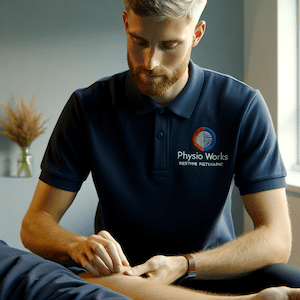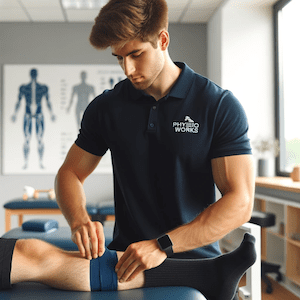Acute Injury Treatment
Article by John Miller

Acute Injury Treatment: Effective Recovery Tips
How to Manage Acute Injuries
When you suffer an acute injury, receiving immediate and appropriate treatment is absolutely essential. The initial days following the injury are critical in setting the course for how quickly and effectively you’ll recover. Swift action not only alleviates pain but also minimises the risk of further damage. During this crucial period, the right treatment can significantly influence the healing process, ensuring that recovery is not only faster but also more complete.
In these early stages, correct interventions play a pivotal role. They set the foundation for a successful recovery trajectory. Neglecting or delaying treatment can lead to complications and prolonged discomfort. Understanding the urgency and seeking prompt professional advice can make a substantial difference. It’s during this time that the body begins its natural healing process, and appropriate measures can effectively support and enhance this process, leading to a more favourable and efficient recovery outcome.
Rest: The Essential First Step
Initially, rest is critical. This doesn’t imply complete inactivity but avoiding activities that exacerbate pain. For the initial 2-3 days, steer clear of painful exercises or movements. Subsequently, it’s crucial to gradually reintroduce movement to avoid further complications.
If in doubt, consulting a physiotherapist for personalised advice is a wise decision.

The Role of Physiotherapy
Physiotherapy plays a vital role in the recovery of soft tissue injuries. Through a variety of techniques, physiotherapists can accelerate pain relief, improve scar tissue formation, and expedite your return to normal activities. They can also provide tailored exercises to strengthen or loosen the injured area and correct any biomechanical faults, reducing the risk of future injuries.
Ice or Heat: Knowing What and When to Use
- Ice: In the first 48-72 hours, ice is beneficial. Apply it for 20 minutes every few hours to reduce pain and swelling, particularly effective for sprains or bruises.
- Heat: Avoid heat in the initial 48 hours as it can exacerbate swelling. Post this period, heat packs can promote blood flow and relax muscles, easing pain. Heat Wheat Packs offer a convenient at-home solution.
Your physiotherapist can guide you on the appropriate use of ice or heat for your specific injury.
Compressive Bandages and Supports: An Aid to Recovery
Using compressive bandages or supports in the early stages can control swelling and aid in forming new scar tissue. This supports the injured area and reduces pain. Some injuries may require additional support like braces or tape. Your physiotherapist will advise you on the best approach for your injury.
Elevation: A Key Component
Elevating the injured area above heart level can significantly reduce swelling. However, this may not be practical or beneficial for all injuries. Pay attention to your body’s signals and use common sense.
The Importance of Early Treatment
Seeking early physiotherapy for acute soft tissue injuries is vital for optimal recovery. Delaying treatment can lead to slower healing, abnormal scar tissue formation, joint stiffness, and muscle weakness. Injuries left untreated for over three months can become chronic, posing a greater challenge to resolve.
Maximising Your Health with Physiotherapy Treatment
Exploring Physiotherapy Treatment for Pain and Injury
Physiotherapy treatment shines as a beacon of hope for individuals grappling with illnesses, injuries, or disabilities. Physiotherapists proactively utilise an array of techniques, including exercises, manual therapies, and soft tissue manipulation. Their professional skills extends to educating patients on managing pain, facilitating injury recovery, and retaining autonomy in daily functions.


Acute and Sub-Acute Injury Management
Physiotherapy treatment strategies are meticulously designed to address both acute and sub-acute injuries. With a focus on joint mobilisation, manipulation, and targeted soft tissue work, physiotherapists ensure each patient embarks on an efficient path to recovery. Supportive devices such as strapping, taping, and braces often complement these techniques.
Incorporating Alternative Therapies
In their holistic approach, many physiotherapists incorporate alternative methods like acupuncture and dry needling to augment pain relief and muscle function. Tailored physiotherapy exercises, ranging from stretching to Swiss ball workouts, are prescribed to meet the diverse needs of patients.
Specialised Physiotherapy Treatment
Specialised services within physiotherapy cater to specific groups and needs. Sports physiotherapy, women's and men's health, and workplace physiotherapy are distinct areas that address the particular challenges faced by different patient populations. Electrotherapy and local modalities such as therapeutic ultrasound and TENS machines represent the another side of physiotherapy treatments.
Targeted Physiotherapy Treatment for Injury Recovery
For those facing acute or sub-acute injuries, physiotherapists provide immediate and effective treatments that target pain, swelling, and inflammation. They blend traditional methods with innovative techniques to foster healing and functional restoration.
Hands-On Techniques in Physiotherapy
The hands-on aspect of physiotherapy is fundamental, with practitioners employing joint mobilisation, manipulation, and massage to catalyse healing and reduce discomfort. Ongoing learning and collaboration with other health professionals ensure that physiotherapy care is both comprehensive and customised.
Support Through Taping and Bracing
Physiotherapists are adept at applying various taping methods and supportive braces to aid in the stabilisation and rehabilitation process. They assess and determine the most suitable support mechanisms for each individual's condition.


Exercise Prescription for Rehabilitation
A broad spectrum of exercises is at the heart of physiotherapy treatment plans. From enhancing muscle flexibility to improving balance and proprioception, physiotherapists deliver evidence-based exercise regimens aimed at optimising recovery and function.
Biomechanical Analysis for Customised Care
A thorough biomechanical assessment underpins the physiotherapeutic approach, guiding the development of personalised treatment plans. This detailed analysis ensures that interventions are accurately targeted to address specific issues.
Specialised Physiotherapy Treatment Modalities
Hydrotherapy and sports physiotherapy offer targeted treatment options for individuals with specific needs, from aquatic exercises to specialised programs for athletes. Vestibular physiotherapy is dedicated to resolving balance disorders and associated symptoms.
Gender-Specific and Workplace Physiotherapy
Addressing the unique health concerns of both men and women, gender-specific physiotherapy utilises techniques like pelvic floor exercises. In the workplace, physiotherapy focuses on preventing and managing job-related injuries, contributing to a healthier work environment.
Conclusion: The Journey to Wellness with Physiotherapy
In conclusion, physiotherapy treatment is a richly diverse field, providing individualised care and a broad range of techniques to support patients on their path to recovery. It's essential to engage with a professional physiotherapy team to develop a tailored approach for achieving personal health and wellness objectives.
Related Articles
- Manual Physiotherapy Techniques: Focusing on joint mobilisation, manipulation, and soft tissue work, this article is ideal for readers seeking to understand the hands-on aspect of physiotherapy.
- Physio Instrument Mobilisation (PIM): This article covers the use of instrument-assisted mobilisation in physiotherapy, providing insights into how these tools aid in treatment.
- Essential Guide To Muscle Treatment: It gives an overview of muscle treatment practices in physiotherapy, including rest, ice, and heat therapies. It's helpful for readers wanting to know about muscle recovery.
- Dry Needling - An Effective Physio Treatment Explained: This article dives into the benefits and applications of dry needling in rehabilitation, discussing its effectiveness in pain management, improving joint mobility, and releasing myofascial trigger points.
- Physiotherapy & Exercise Prescription: It highlights the importance of tailored exercise regimens in physiotherapy, discussing how physiotherapists use their knowledge of exercise physiology to craft personalised treatment plans.
- Acute Injury Treatment - Soft Tissue Recovery Tips: This article offers tips and strategies for the recovery of soft tissue injuries, focusing on the role of physiotherapy in the healing process.
- Electrotherapy & Local Modalities: This piece explores physiotherapy treatment modalities like ultrasound and tens machines, and their role in treating pain disorders.




